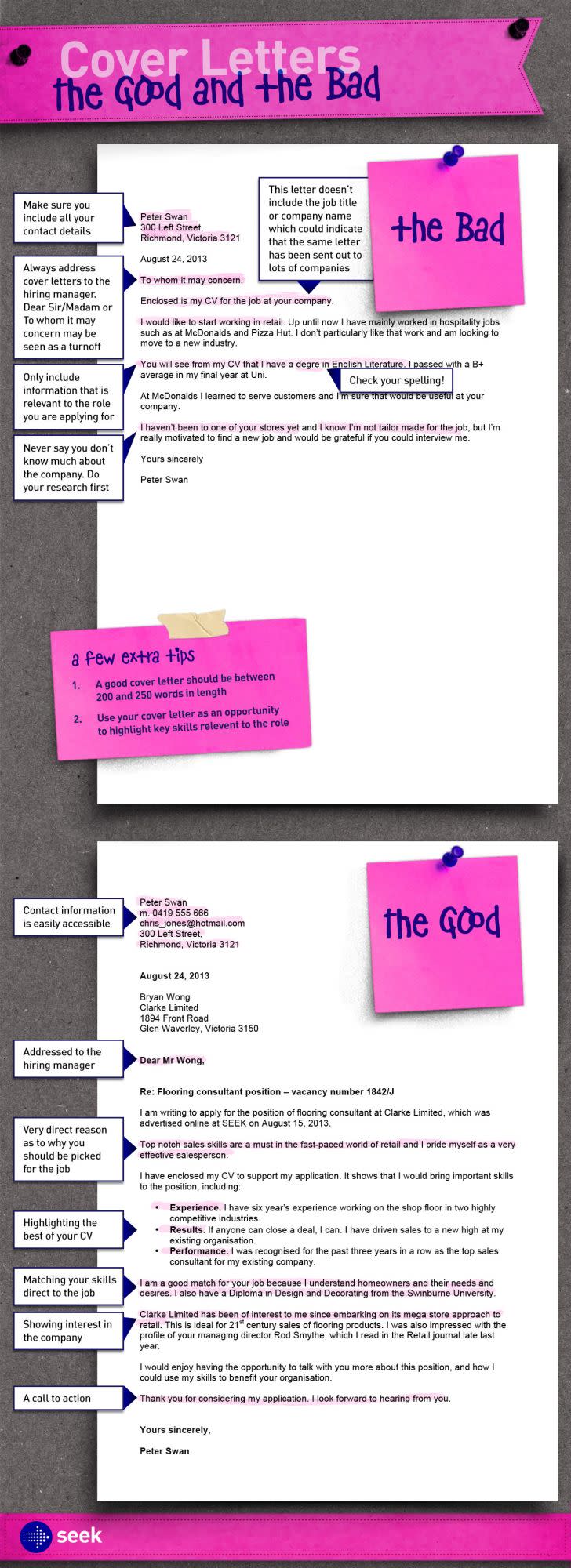Job experts reveal major 'turnoff' in a cover letter

Writing a cover letter can be one of the most hated elements of a job search, but SEEK’s head of customer insights has some good news for job seekers: it probably doesn’t need to be as long as you think.
“Cover letters are crucial. They introduce you to the employer, they’re a chance to bring out your personality, and they highlight the experience outlined in your resume,” SEEK’s Elyssia Clark told Yahoo Finance.
Also read: How to write an impressive cover letter
Also read: Delete these eight words from your resume immediately
“Your cover letter might not be the first thing a recruiter or an employer looks at, but if your application doesn’t have one, you’re putting yourself at a disadvantage.”
She said the key to a winning cover letter is to “keep it brief”. A cover letter should give the person reading it an idea of who you are, so it’s a good idea to keep it punchy, with four to five paragraphs enough. In fact, between 200 and 250 words is SEEK’s sweet spot.
To do this, you’ll need to avoid waffle.
“We’ve all been tempted to give potential employers a little more background, a little more context, a little more of us,” Clark said.
“However, cover letters aren’t the time for this. Be up front and explain why you’re the person for the job right away.”
And steer clear of just repeating what’s already on your resume.
Career coach Ashley Stahl listed this as one of the biggest cover letter mistakes job seekers make.
“Do not just vomit your resume out entirely. [The hiring manager will] know, and they'll hold it against you,” Stahl said.
Clark agreed, saying a cover letter should ideally expand upon the relevant points in your resume, rather than just rehashing them.
“Use language which is professional and personable, as you introduce yourself and include comments such as how you found out about the role, why you’re interested in it and your understanding of the company’s purpose and culture.”
Good and bad cover letter example
SEEK shared an infographic highlighting the differences between a good and a bad cover letter.
The bad cover letter includes details that are not relevant to the position, and begins with “To whom it may concern,” which SEEK says can be “seen as a turnoff”.
It’s also short on contact details, has spelling errors and shows little research into the company.
Conversely, the good cover letter includes all the relevant contact details, no spelling errors and is addressed to the hiring manager.
Then, it goes into why the candidate should be picked for the job before highlighting the best details of their CV and matching their skills to the job, while showing interest in the company.
SEEK

Want to take control of your finances and your future? Join the Women’s Money Movement on LinkedIn and follow Yahoo Finance Australia on Facebook, Twitter and Instagram.

 Yahoo Finance
Yahoo Finance 
